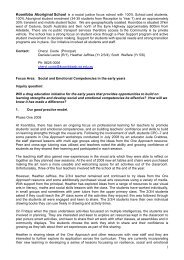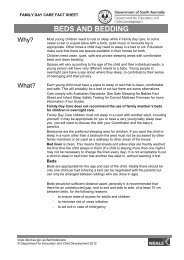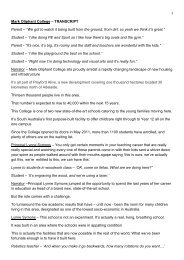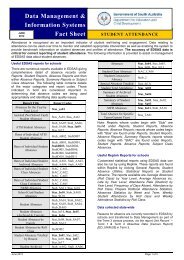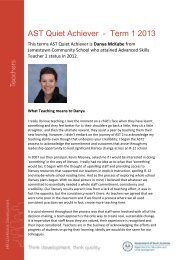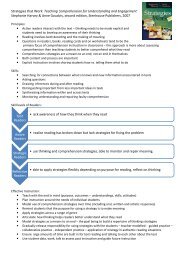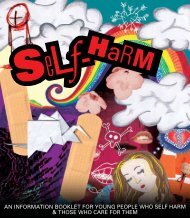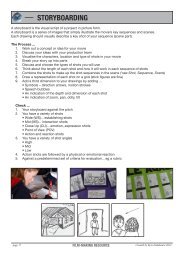Tips for shooting great movies (PDF, 559KB)
Tips for shooting great movies (PDF, 559KB)
Tips for shooting great movies (PDF, 559KB)
Create successful ePaper yourself
Turn your PDF publications into a flip-book with our unique Google optimized e-Paper software.
page 26<br />
TIPS FOR SHOOTING GREAT MOVIES (cont)<br />
12. Shot Variety<br />
When <strong>shooting</strong> video, get plenty of A-roll (main event shots) and B-roll footage (fill or cut away shots). If a<br />
<strong>shooting</strong> a sports day story as well as <strong>shooting</strong> each event, get shots of crowd reaction, the starter’s gun,<br />
preparing <strong>for</strong> an event, presentations etc.<br />
13. Watch Your Angle<br />
Take your shots from a variety of angles. Experiment by <strong>shooting</strong> from high and low angles. Try to avoid<br />
<strong>shooting</strong> all your shots from ‘front on’ and from eye level. Try to get perspective into your shots.<br />
14. Create Some Interest<br />
Try shoots that are different and creative. Experiment by <strong>shooting</strong> the reflection in a pond or mirror. Shoot<br />
from a moving car. Shoot from inside a dark room the action taking place outside an open door in bright<br />
light. Shoot ‘walking feet’ from ground level. Shoot lots of POV (Point of View Shots).<br />
15. Move It<br />
Moving with the camera while <strong>shooting</strong> can be very powerful. Follow a conversation taking place; a<br />
person walking; or move towards or away from a subject to create depth. Experiment by moving with<br />
the camera <strong>for</strong> POV and subjective shots. Use a dolly, wheelchair, skate-board or cushion to steady the<br />
camera while moving. Take care while <strong>shooting</strong>!<br />
16. Action and Reaction<br />
Where characters are involved action shots should be followed by reaction shots. If <strong>shooting</strong> a wide action<br />
shot of a person running and he/ she is becoming exhausted, shoot a close up reaction shot of their face<br />
panting.<br />
17. Establish the Setting<br />
An audience needs to connect with where the action (story) is taking place. Use establishing (wide, long)<br />
shots to verify a location. This can also be done with ‘on screen’ text during editing.<br />
18. Connect the Start and Finish<br />
Good stories often connect the beginning and end (either with a location or a statement or question). In<br />
some <strong>movies</strong>, we see a setting shot that is repeated at the end of the movie as a cap-off. This often works<br />
well in any video, particularly with short stories, commercials or documentaries.<br />
19. Listen<br />
Always wear headphones to monitor audio input level while <strong>shooting</strong> particularly <strong>for</strong> ambient and<br />
background sound and conversation shots. Use an external microphone where ever possible.<br />
20. Talk About It<br />
Communication is a key component of a successful production. Discuss in your production team issues<br />
such as shot type, location, framing, genre, mood and message. Also discuss new ideas that may arise.<br />
FILM-MAKING RESOURCE<br />
Created by Kym Nadebaum 2012



